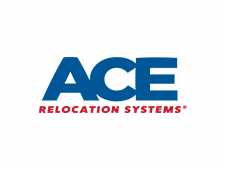Sean Randolph
Medium.com, June 24, 2020
The Trump administration’s plan to suspend the issuance of H-1B and other temporary visas through the end of 2020 is a direct challenge to the business model that has made Silicon Valley and other U.S. technology centers successful. It is also a model that underpins our economic and technological leadership.
Silicon Valley is built on talent, much of it coming from around the world. The ability to attract the best trained and most creative people is a large part of the explanation for why its economy has excelled. While the short-term impacts of this new policy will be limited (the executive order does not apply to visa holders already in the country), restricting flows of talent to the U.S. will come at significant longterm cost to competitiveness and to Americans whether or not they work in tech.
The National Foundation for American Policy recently examined data for 91 unicorns (new companies valued at $1 billion or more). What it found was telling: more than half (50) have at least one immigrant founder (the many Bay Area examples include Tesla, Slack and Uber). Their collective value at the time the research was conducted was $248 billion, and on average they had created 1200 jobs per company, the vast majority here in the U.S. Tellingly, 33 of those companies are headquartered in California. The contributions of innovative immigrants extend beyond founders: 75 of the 91 companies surveyed (82%) had at least one immigrant filling key management or product development roles, the most common being CEO, CTO of Vice President for Engineering.
Other research by the Marion Ewing Kauffman Foundation finds that immigrants are twice as likely as native born citizens to become entrepreneurs. We see this in the Bay Area every day, where 40-45% of startups are led by entrepreneurs who came from other countries. The implication is clear: fewer immigrants, fewer startups. And losing those startups means fewer new companies and fewer jobs.
H-1Bs are used by both tech and non-tech companies to fill jobs where the needed skills are unique or not available locally. The numbers aren’t large but they are strategic. In many cases visa holders go on to win green cards, or permanent residency, which enables them to contribute to the U.S. economy long term. So this isn’t just about temporary workers – it’s about innovation and long-term talent flows.
Shutting that door has several other implications: educated immigrants who are denied entry to the U.S. are welcomed by countries with which we compete and may choose to go there instead. Or they may choose to stay home to start their companies. If Silicon Valley or other companies can’t find the skills they need when they need them the odds increase that more high skilled jobs and functions will leave the U.S. for other countries such as Canada, which welcomes immigrants and where educated workers with advanced skills are readily available. Universities that rely heavily on foreign students to fill their graduate departments in fields such as engineering and computer science are also vulnerable if potential applicants believe they have no opportunity to work in the U.S. following graduation.
Other visas will also be suspended – H-2Bs for seasonal workers (for example at summer resorts where local workers are in short supply), L visas that apply to intra-company transfers, and J visas that enable work-study summer programs for students. All are forms of legal immigration that fill unmet needs and create opportunity. Using the coronavirus as an excuse to pull up the drawbridge will not fill critical needs or create new jobs. It will, on the other hand, undercut the flow of talent that has made America truly great. Businesses and citizens groups should push back.
Sean Randolph is Senior Director at the Bay Area Council Economic Institute.












































